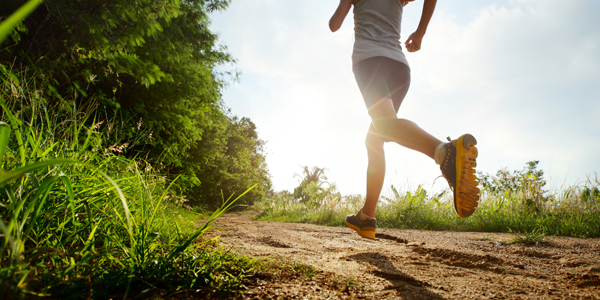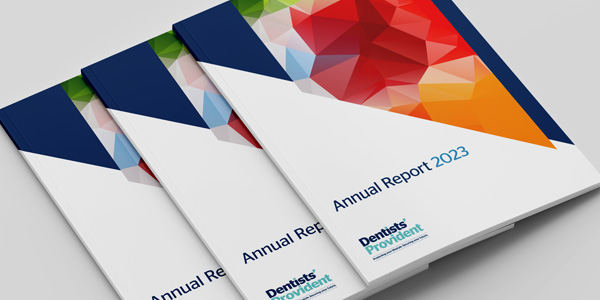
With the Rio Olympics not far behind us and the ‘Indian summers’ setting in, you might be inspired to start running or improve your current level of activity,whether it is to get fit, lose weight, do a practice team mud run or attempt your first or fifth marathon.
We all know that exercise is good for you. Physically and mentally,1 it has many positive effects from keeping you healthy, losing excess weight and making you feel good, and for most of us running is one of cheapest and most accessable forms of exercise there is. But as we step it up a gear with a specific goal in mind, train for further distances or a better ‘PB’, do we really know what we are doing to our bodies?
Marathons
Marathons are considered to be one of the most demanding challenges, both physically and mentally. They require months of preparation and dedicated training to be successful and not damage your body and overall health. And now with around 100 marathons, let alone half marathons, triathlons, ultramarathon, trail runs, 10ks and park runs in the UK every year, whatever challenge you fancy, there is something near you that you can start training for today.
Musculoskeletal
In 2015 we paid claims of nearly £1.5 million for musculoskeletal issues, and while people tend to think about the effects of injuries to their backs, necks, wrists and shoulders in their practising life, injuries to your feet, ankles and knees could also affect your ability to work. Not only are fully functioning legs and feet obviously crucial to walking or driving to your surgery, but they are also required to maintain good posture and use any foot pedals you may have.
Runner’s injuries
About 80% of runners are believed to suffer from some form of injury at some point every year and of these most are thought to be due to the repetitive nature of the activity.
The NHS list the five most common running injuries as those that affect the knee, shin, Achilles and heel, as well as general muscle strains. Runner’s World believes, however, that there are seven main types:
In 2015 we paid over £500,000 in claims for accidents that kept dentists off work, including recreational and sporting injuries.
If you search libraries of scientific research you may be interested by the number of papers into the effects of running on our bodies and investigations into the cause and effects of various running injuries.
In November 2015, a paper was published in the Journal of Sports Science that looked into an increase in running cadence and the associated most common overuse injuries, as several injuries can be directly associated with an increase in activity with a healthy runner. In this paper they found that with increased cadence there was a decrease in peak knee flexion and a later occurrence of internal rotation. Therefore with an increase in cadence, it could be wise to have your coordination and gait professionally observed as they could give insight into your risk of injury.
What contributes to injuries?
Of course as a runner, it is often hard to fit in a structured training plan, juggling life, work and family commitments, time is often short so you may be fitting in a quick run before or after surgery. With the struggle to fit in your training time, it’s easy not to warm up and cool down properly and not warming up or stretching afterwards has been linked to injuries. That on top of not wearing the right trainers suitable for your type of running such as road or trail and also your pronation and running gait, could be a recipe for disaster. A professional in a reputable running shop or a physiotherapist can review your gait and running style and recommend shoes that will support you and help to prevent injuries. And don’t forget to change them regularly as the recommended number of miles in any shoes is 300-500 - depending on your gait and pressure - and most runners leave it too late. Your gait and postural stability could have a huge effect on whether you are prone to certain types of running injuries or not.
There is much debate in running magazines about how to prevent injuries and some say that dynamic (rather than static) stretches such as lunges and leg swings followed by a short jog may not be enough in your warm up, but rather proper intrinsic preparation is key to preventing injuries. Rachel France, fitness expert, believes that it is our sedentary lifestyle that is causing these problems as our muscles adapt during periods of inactivity by contracting to hold us sitting and these are then ill prepared for any movement, let alone the stress running can put on our bodies. Researchers have suggested that instead of stretching the muscles we should actually contract them by a small amount and this could actually allow more freedom of movement.
Foot mobility, and whether you have flat feet or not, could also contribute to injury by the way you step, pronate and move your foot. A study reported in the Biomech journal in November 2015 investigated the sensitive kinetic changes with and without flat feet and it showed significant difference on threshold level when participants were asked to stand on one leg while their stability was tested.
Bryan Gross, head of claims and underwriting at Dentists’ Provident said, “We get a number of members call to claim for sporting accidents and although the minor bumps, sprains or tears may only have you off work for one or two days, you could find yourself in the position where your doctor recommends you keep your leg or ankle iced and elevated for longer. You may find this hard to do in practice and by not following their advice you could potentially end up extending your recovery time.”
Consequences of extreme running
Two studies published last summer in the International Journal of Sports Medicine and Exercise Immunology Reviews by Dr. Ricardo Costa of the Monash University in Melbourne looked at exercising at extreme levels. According to Dr. Costa, exercising for more than four hours in one session is deemed extreme, as is engaging in repetitive days of endurance exercising, and when he analysed blood samples from marathon runners taken immediately after the event, he found markers of blood poisoning.
"Blood samples taken before and after the events, compared with a control group, proved that exercise over a prolonged period of time causes the gut wall to change, allowing the naturally present bacteria, known as endotoxins, in the gut to leak into the bloodstream," Dr. Costa explains. "This then triggers a systemic inflammatory response from the body's immune cells, similar to a serious infection episode."
Interestingly, the team found that participants who were fitter and spent longer training for the marathons had higher levels of the anti-inflammatory cytokine called Interleukin 10 in their blood, which offset any negative health effects caused by their endotoxin-induced immune response. Their findings, the team say, emphasize the importance of following guidance when it comes to taking part in extreme endurance events.
Research published in the Canadian Journal of Cardiology in October 2013 showed that running a marathon can cause your heart muscles to swell, especially with runners with lower fitness levels. Dr. Eric Larose, of Québec University in Canada, observed that half of the amateur runners experienced a decreased function in their left and right ventricles, as well as their heart muscle swelling and blood flow reducing, and that these conditions were more common in runners who had lower fitness levels and who trained less. He also observed that these changes were temporary.
Again it points to the fact that runners need to properly prepare before competing in a marathon to not cause injury or harm to their bodies.
In December last year the New Scientist also reported research undertaken to determine the effect of extreme exercise on ultramarathon runners. They found that the runners experienced cartilage degradation during the first 2500km of the race and after that it seemed to recover, showing for the first time that cartilage can regenerate during running as well as rest. They also saw that the runners experienced shrinkage of their brain by 6 per cent over the course of the race, believed to be either because the brain is getting a lack of new stimulation or that it is diverting energy to regions of the brain in charge of motivation. There was a total recovery within six months and normal marathon runners didn’t experience it.
Prevention
On their website, Runner’s World dedicate a section to a whole host of injuries and how you could avoid them. It could be worth taking the time and doing research on sites you know, especially if you have an existing weakness or tendency for certain inquires. Their list includes foot Injuries from Hallux Rigidus to Plantar Fasciitis, ankle-area injuries as Achilles Rupture peritendinitis, lower-leg injuries like Anterior Compartment Syndrome or Tibial Periositis, knee injuries including Baker's Cyst, Hoffars syndrome and Osgood-Schlatters disease, upper-leg injuries such as pulled hamstrings; and hip injuries like ITBS.
The right shoes
Richard Lopez, senior physiotherapist for Nuffield Health at Wessex Hospital, says “Different individuals have different gait patterns and selecting the right type of running shoe is dependent upon your gait pattern. The correct shoe type will encourage your foot to strike the ground in an optimum position to maximise efficiency and reduce stress on the joints and muscles in the leg.”
Elizabeth Smith, registered podiatrist in Surrey says "When doing any sport it is really important to choose the correct footwear. This enables you to be comfortable and cause minimum damage to your feet. When running long distances i.e. marathons, trainers need to fit well to avoid damage to soft tissues and to help support the ankle. Poor fitting trainers can cause blackened nails and bruising of the nail bed. These nails are best left to grow out. It takes approximately eight to nine months for the nail to grow from the base to the distal edge. The apex of the toes could also be damaged if the trainers are not fitted correctly. Toenails that are cut too short could also be a problem causing in growing toenails through pressure. The conclusion being correctly fitting trainers and socks (the odd blister plaster if in any doubt!) could make the world of difference!”
The right warm up and cool down
As well as dynamic and static stretching and performing a number of specific exercises relevant to the muscles used more in running, many physiotherapists also recommend the use of foam rollers or massage balls as well as supporting certain muscles with kinesiology tape. However there are a limited number of systematic reviews to support the scientific evidence behind this type of therapy, so it is always best to try and see what works for you and, if it does, the professional advice is to use it.
A study reported in November 2015 in the International Journal of Sports Physical Therapy looked at the current evidence for the use of foam rollers and found 14 articles that reviewed the use of them. On analysing the results of these 14 articles self-myofascial release (SMR) appeared to have positive short-term effects on improving a joint’s range of movement without negatively affecting the muscles’ performance and may actually reduce the delayed onset of muscle soreness after intense exercise. But again, the research into this is limited.
The UK website for Kinesio tape claims it can alleviate pain, reduce inflammation, relax muscles, enhance performance and help with rehabilitation as well as supporting muscles during a sporting event.
Richard Lopez concludes “There are many variables which can contribute to the development of a running injury. Footwear, training load, training surface, weakness, previous injury and flexibility are some, but by no means all of the factors to be considered. Physiotherapists are experts in bio-mechanics. They have specialist knowledge of how the muscles, joints and ligaments in the body interact to produce movement. They can use this expertise to assess the way you move and consider the external variables which influence movement to identify potential problems before they create injury. Even if you do not have any pain or symptoms a physiotherapist can review your flexibility, strength and core stability to identify any weaknesses that could cause a problem. They will then advise you as to the best intervention. There are a number of treatments that might be chosen to help you prevent a running injury, the right course of treatment will be different for everyone but it is likely that you will be advised to use a combination of the following in your training regime: stretching; massage; core stability and strength training such as with Pilates and the correct footwear.”
Overall the more prepared and knowledgeable you are before you start training, the better your chances are of not experiencing a niggle that turns into a longer standing injury that not only stops your training plan but that may also affect your practising life. The general advice is remember why you run, enjoy it and don’t put yourself under too much pressure just for one event… Happy running.
References available on request.
This article is intended for information only. It is not designed to give financial or medical advice, nor is it intended to make any recommendations of the suitability of our plans for a particular individual. Full details of our contract can be found in our rules on our website www.dentistsprovident.co.uk. Dentists’ Provident Society Limited does not accept liability and responsibility for changes made to this information. Some of the information in this article has been obtained from third parties. While we believe the information to be reliable; we make no representations as to its accuracy and accept no responsibility or liability for any error, omission or inaccuracy in the data supplied by any third party.
If you have any questions, please contact our member services consultants by emailing press@dentistsprovident.co.uk or calling 020 7400 5710.
If you have any questions, please contact our member services consultants by emailing
memberservices@dentistsprovident.co.uk or calling 020 7400 5710.

Our 2024 Annual General Meeting will be held at 91-94 Saffron Hill, London, EC1N 8QP on Friday 24th Ma…
Read more
The 2023 annual report from Dentists’ Provident, a leading income protection provider for dental profe…
Read more
Our next exhibition is the British Dental Conference & Dentistry Show in May, where we look forward to meeting anyone interested in becoming a member or members wanting to discuss their plans.